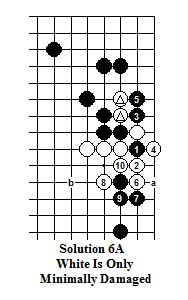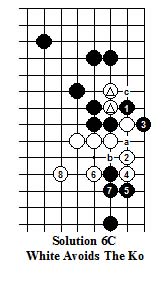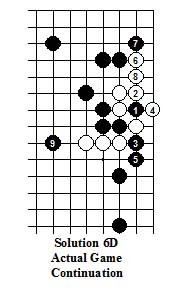
Solution 6 A There are twin cutting points on the second line available for Black to exploit.
If B1 here, then the atari of W2 on the outside is to be expected. After the counter atari of B3, the capture of the sacrifice B1 by W4 is natural and necessary.
Then B5 virtually assures the capture of the two marked Whites. After that, with the sequence thru W10 the bulk of White’s force is essentially safe because White not only has free access to the open center, but “a” or “b” are miai to secure two eyes.


